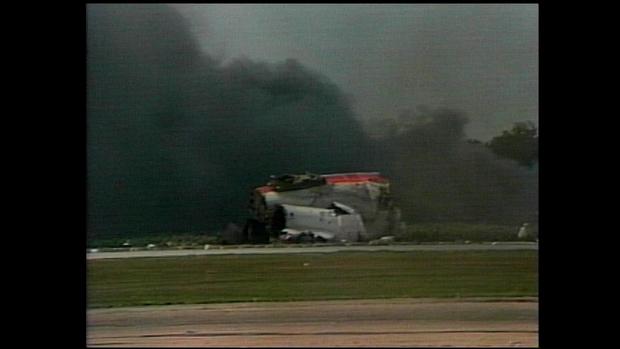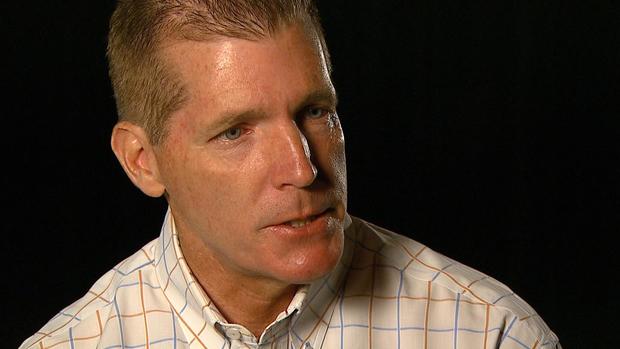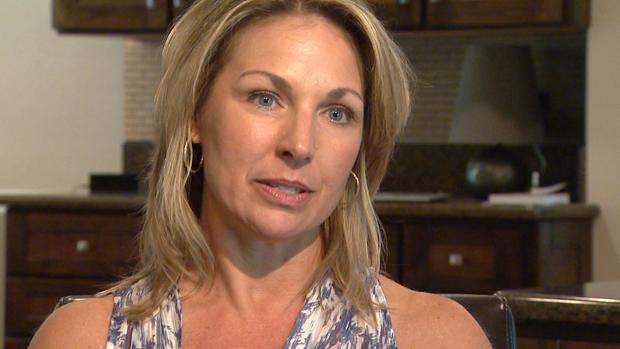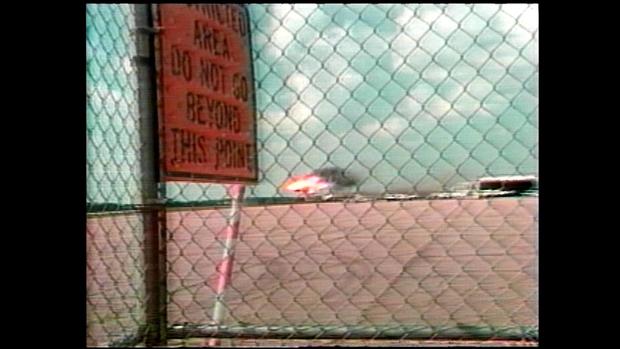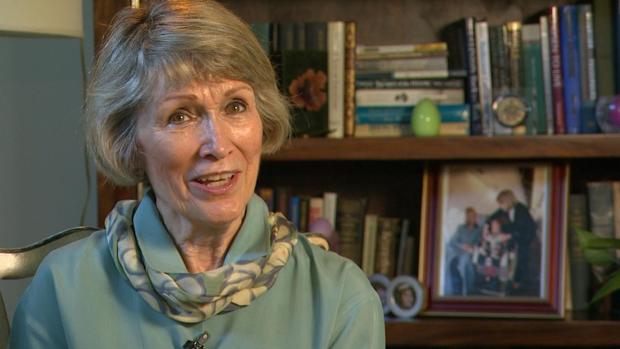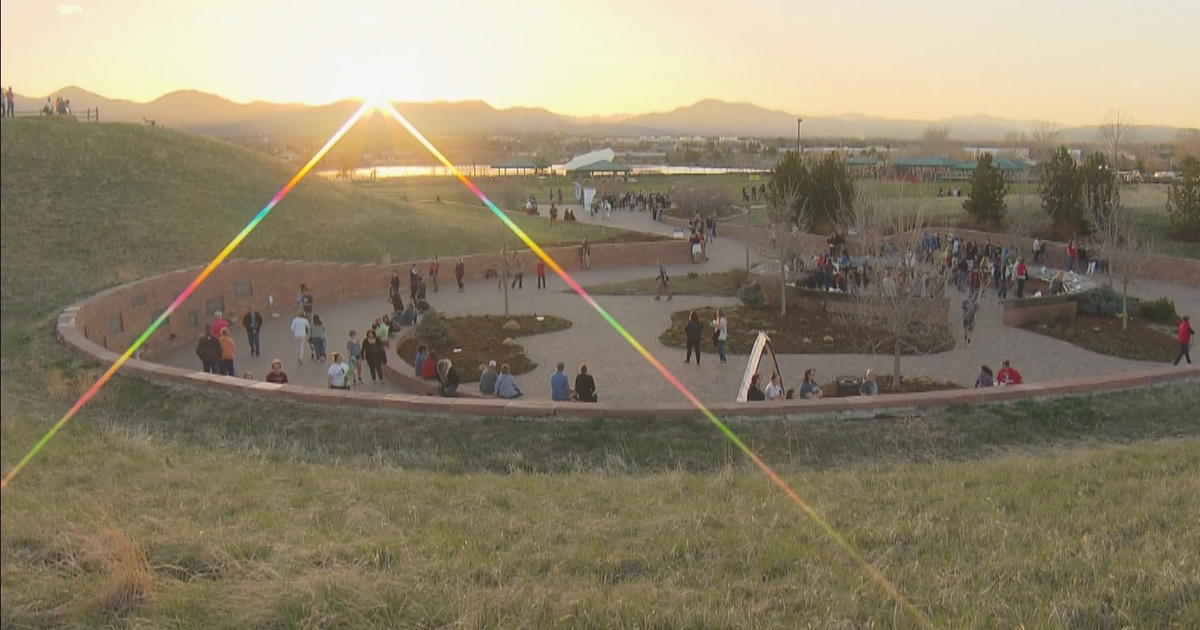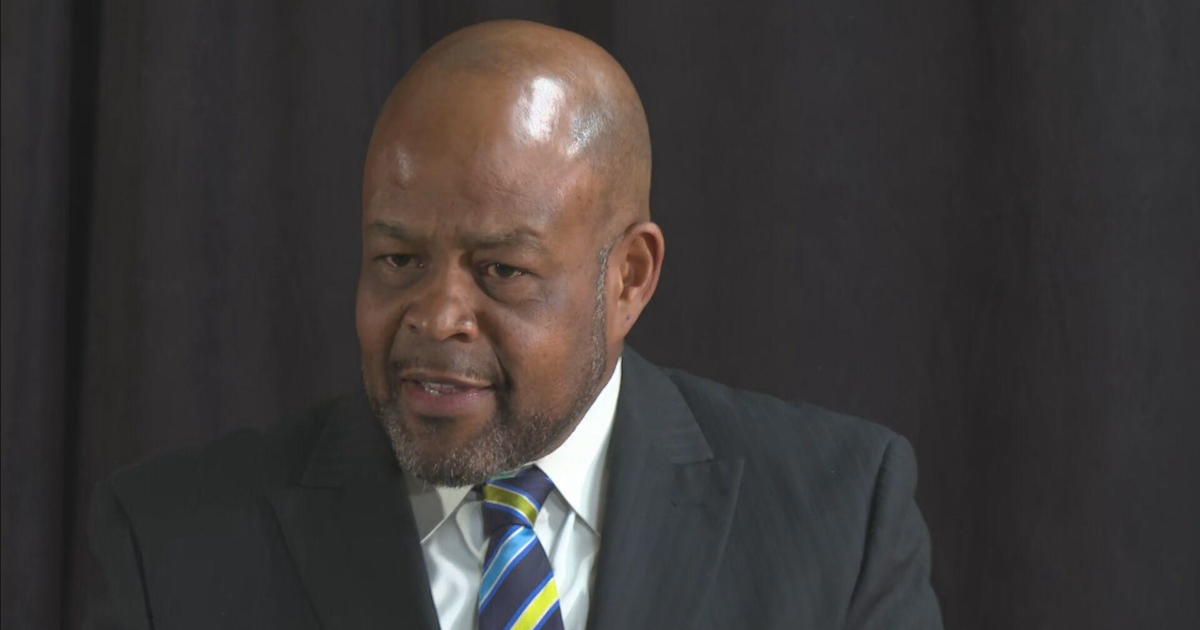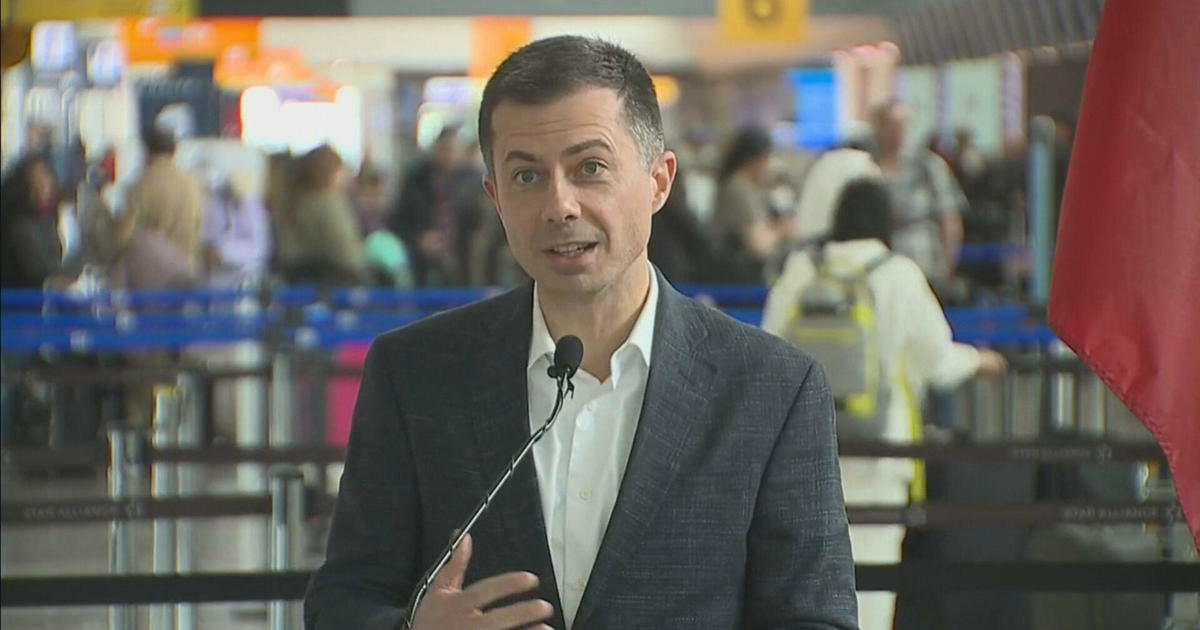25 Years After Horrific Crash, Memories Surface And Crusades Continue
Written by Tim Skillern for CBSDenver.com
DENVER (CBS4) - A quarter-century after an airplane's crash into an Iowa cornfield killed 111 passengers, one crew member continues to push for children's safety aboard flights.
United Airlines flight 232 left Denver's Stapleton International Airport on July 19, 1989, bound for Chicago when engine trouble forced pilots to crash-land the DC-10 at Sioux City's airport. Of 296 aboard, 185 survived.
One passenger and two crew members spoke to CBS4 recently about their experiences and memories and how one passenger's death triggered a campaign for safety.
Here are their stories.
***
For Jerry Schemmel and his boss, Jay Ramsdell, bad luck struck early in the day. The pair was scheduled to leave Denver's Stapleton Airport on a 7 a.m. flight, but they were bumped and placed on standby for four flights.
They were the last to board flight 232.
Flight attendant Susan Callender (whose name was Susan White at the time) escorted them down the jetway. Schemmel recalls boarding:
"I remember her distinctly telling us, 'Hey, hope you don't plan on getting any sleep today because we have a lot of kids, a lot of babies on this flight.' She said it tongue in cheek, but it was true."
Schemmel took his seat in row 23, behind the second bulkhead on a plane of 38 rows and close to an emergency exit. Ramsdell sat about seven rows back, Schemmel believes. As with any crash, location meant everything.
A little more than an hour into the flight, portions of the tail-mounted engine failed, fractured and then punctured portions of the hydraulic systems, severely limiting the pilots' control of the plane and disabling the landing gear.
Schemmel heard an explosion from the rear of the plane and his thoughts narrowed to bombs and terrorism: "For a while I thought it was doomsday."
Then the plane started to level again. "After a couple minutes, I thought, 'Maybe we're going to be OK.' "
But the situation was more severe. The pilot, Alfred C. Haynes, informed the crew they'd proceed with a crash-landing -- and it'd be rough, he warned.
Callender said the pilots told the crew they didn't have any hydraulics and couldn't break or steer. There would probably be a fire, too.
A flight attendant working first class emerged panicked from the cockpit, Callender, then 25, said.
"They can't control the airplane," she remembers her coworker saying.
***
After Haynes announced via the plane's PA system he needed to perform a crash-landing, the crew prepared the cabin for the inevitable. Schemmel remembers the pilot calling it a "serious predicament."
"I took inventory," Schemmel said. "I thought about the fact I might not make it. I looked at triumphs. I looked at regrets. At the end I was pretty much at peace. If I die, I'm probably ready as I'm going to be."
After another flight attendant, Jan Brown, finished prepping passengers, she wondered: Had she covered everything? Then she remembered there were four "lap children" -- the term for kids not in their own seats -- aboard.
She and her crew handed pillows and blankets to the parents to help buffer their kids upon impact -- the procedure at the time. They were placed on the floor to be braced for impact.
"When I was saying this, it just hit me that, in a classroom situation, this sounded sane. But for me to be telling passengers in the emergency that we were in, it was the most ludicrous thing I had ever said in my life. I might as well have said, 'Just hold them and hope for the best.' It was a horrendous moment."
What followed was much worse ...
On the plane's descent, Callender spotted an air phone and considered calling her parents.
"I wanted to say goodbye because I felt like I was going to die," she said.
Her thoughts and actions veered in random directions:
She knew she needed to prepare the cabin for landing. She imagined her pastor announcing her death in church. She secured the coffee cart so it wouldn't smack into passengers. She wondered how her parents would accept losing a child. She instructed passengers how to prepare for a crash so violent no one could anticipate it. She thought about her five sisters divvying up her clothing and jewelry, "and wearing them and how sad they would be." She secured herself in her jump seat. She worried about the trouble her parents would go through retrieving her car from the airport after she died because access to the employee parking lot was limited.
Back and forth, Callender went between her duties and praying and thinking about her life. She girded herself right before touchdown and told herself, "I'm ready, I'm ready."
"We yelled, 'Brace, brace, brace!' for a minute solid," she recalled. "It seemed like an eternity."
When the plane crashed, its right wing smacked the runway first, and upon impact, the tail section severed from the fuselage, which skipped several times across the runway. Portions of the plane settled into the nearby cornfield.
"I never could have imagined how we just literally smashed into earth," Brown, then 47, said.
Spilled fuel ignited immediately. Fire and smoke engulfed the plane's rear.
Callender remembers saying calmly to herself: "I'm burning to death."
"And then we started tumbling," she said, "and there was a sensation of being on an old rickety rollercoaster and being in a tornado at the same time."
Quiet then swallowed the plane, followed by an adrenaline rush. Her training kicked in: "Release your seat belt and get out!" she shouted at passengers.
She escaped the plane through rear, but she could hear a man and boy crying for help. They were suspended from their seats -- now at the plane's ceiling -- by their seatbelts.
She and a rescue worker called to them to unclasp their belts. They did and were caught safely.
***
Meanwhile, in row 23, Schemmel remembers the "complete chaos" inside the fuselage.
"It wasn't a crash-landing. It was us dropping out of the sky and slamming down to the earth. For all the thoughts I had about what it was going to be like, I wasn't ready for that. I thought, 'All right, a crash-landing is a crash, but it's a landing.' Ours felt like we just dropped out of the sky."
The crash tossed passengers randomly about the cabin. Some were still strapped in their seats. Smoke, fire and debris whipped about in the first few seconds.
Schemmel was hanging upside-down and was one of the very few still buckled in his area.
Earlier, Schemmel and Callender had formulated a plan. When the plane touched down, he'd deploy the chute, slide down and assist passengers while she helped them escape.
"I looked over where that emergency chute was and it was gone," he said.
"There was nothing left of that exit. It was a wall of burning scrap."
That was Plan A.
"I really didn't have a Plan B," he said.
When he realized he couldn't go forward in the plane, he headed to the back -- "chased back there by the smoke" -- and eventually saw an opening where part of the plane had broken off. He saw passengers fleeing.
"I realized when I saw that and I saw sunlight and I saw cornstalks, that I wasn't going to perish in that crash," Schemmel said.
Then he went back in.
Just a couple steps into the cornfield, he heard a baby crying inside the wreckage. He didn't consider not heading back inside.
Schemmel believes the child was sitting in row 11, around her mother's feet, before the crash. He found her near row 25 or 26 inside an overhead bin. Amid the smoke, he felt around, fished her out and shot back out the plane.
Another child wasn't fortunate.
Evan Tsao, just 22 months old, sat directly in front of Schemmel, likely in seat 22E with his mother, according to an NTSB map of the plane.
"We're two and a half feet apart. I can see him peering over the seatback, playing peekaboo with me one moment," he said. But minutes later: "He's dead. He's gone." He succumbed to smoke inhalation, according to NTSB documents.
Tsao's mother, who is listed as Sylvia Tsao on a passenger list compiled by United Airlines, survived.
Brown, the flight attendant, remembered comforting Sylvia before the crash.
"We're OK. We're still flying," Brown spoke to her calmly. "We lost an engine but we still have two engines. We're going to be fine." That seemed to soothe her, Brown said.
Later, after the smoke forced Brown from the plane, she encountered Sylvia outside the wreckage. The mother was returning to the plane to search for her son.
"I blocked her path," she said, "I told her there were rescue workers who will find him." But Sylvia merely looked at her and said, "You told me to put my baby on the floor and I did. And he's gone."
"I'll live with that for the rest of my life," Brown said.
Schemmel feels guilt pangs, too: "I'm 29 years old. He's a year and a half. He has his whole life in front him. I survive without any serious injuries and he dies. That one is pretty tough to process." He suffered another loss that day. His friend and boss, Jay, perished.
There's a lesson in their deaths, but in Tsao's particularly, one that Brown has turned into a crusade.
"That was the turning point in my life," Brown said. "We should learn from our experiences. The only way they aren't mistakes is if we learn from them. You can take a tragedy and turn it into a win if you learn that children are not safe sitting on laps."
Brown, now retired, has worked for more than 25 years to lobby the industry to require separate seats for children.
Some parents may be lured into a false sense of security. Surely, Brown said, parents believe they can secure a 20-pound child in their arms -- even in a crash.
That's not the case, she said: "Parents find they can't hold their child. G-forces can make a 20-pound infant over a hundred pounds. Not all the loving arms in the world will hold them."
She's laser-focused on forcing the Federal Aviation Administration to change its requirements on child safety aboard airlines. All children should be restrained in seats, she argues.
The FAA, for its part, does encourage parents to place children in a government-approved child safety restraint system. "Your arms aren't capable of holding your child securely, especially during unexpected turbulence," it says on its website.
But the FAA doesn't require parents purchase a separate seat for young children.
Its critics point to failed logic. They say the FAA maintains children are, indirectly, safer not restrained aboard flights because if airlines require parents buy an extra seat for their child, air travel will become too expensive and families will opt to drive instead. Highways are more dangerous, even when children are in car seats, the FAA argues.
James Simmons, a professor of aviation and aerospace science at Metropolitan State University in Denver, says he agrees with Brown.
"Safety shouldn't be a matter of how you choose to spend money," he said, adding that it's odd airlines require passengers to stow away every last item -- except their children.
"That makes no logical sense," Simmons said.
The National Transportation Safety Board has on multiple occasions recommended child-safety seats. In April, the outgoing chair, Deborah Hersman, said "one of her great disappointments" was that the NTSB couldn't convince the FAA to change its policy, according to USA Today.
The FAA makes policy and enforces rules. The NTSB investigates accidents and offers recommendations.
Calling the FAA's decisions "unconscionable," Brown said she's frustrated the government considers children's safety less important than adults.
"Don't they deserve the same safety as every other passenger on the airplane?" she asks. "Don't they deserve more?"
- Written by Tim Skillern for CBSDenver.com
